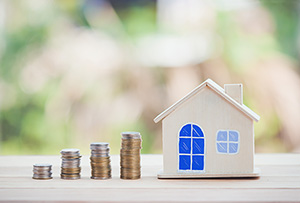Housing Affordability Declining, but Buyer Demand Remains High
Image: Natara / Adobestock

Buyers looking to enter the housing market are being hit with both rising mortgage rates and sustained price increases, which are both negatively impacting housing affordability. According to Lawrence Yun, National Association of Realtors' (NAR) chief economist, some buyers "who had previously qualified at a 3% mortgage rate are no longer able to buy at the 4% rate." In addition, monthly payments have increased by 28% from a year ago. Yet despite the decline in housing affordability, buyer demand is still strong, with multiple offers being recorded on most properties.
Housing Becoming Less Affordable
Though the demand from buyers still appears to be strong, many are being priced out of the market due to those climbing mortgage rates and escalating prices. In addition, increasing inflation is taking a toll on consumers' savings. However, Yun predicts improving conditions in the coming months: "I expect the pace of price appreciation to slow as demand cools and as supply improves somewhat due to more home construction." The median existing-home price for all housing types climbed 15% in February. For the past 120 consecutive months, prices have increased year-over-year; what's more, home prices climbed in every sales region in the country.
Home Inventory Still Low
The increase in prices can be attributed in part to the lack of supply. By the end of February, the inventory of available homes reached 870,000, down 15.5% from a year ago. At the current sales pace, this level of inventory would supply the market for just 1.7 months; this was up from the 1.6-month supply in January but down from the 2.0-month supply in February 2021. Overall existing-home sales, meanwhile, declined in February, with each sales region in the country recording month-over-month sales decreases. According to NAR, year-over-year sales were down in three regions but were up in the South.
Who's Purchasing?
Fewer first-time buyers were able to make purchases, with this group accounting for just 29% of all sales in February, down from 31% a year ago. According to NAR's 2021 Profile of Home Buyers and Sellers, the annual share of first-time buyers was 34%. Individual investors and second-home buyers—two groups who account for most all-cash sales-were responsible for 19% of all transactions, up from 17% in February 2021. All-cash sales represented 25% of all transactions in February 2022 and 22% in February 2021. The average property remained available for sale for just 18 days in February, down from 20 days a year ago. Of all the homes sold in February, 84% were on the market for less than 30 days.
Regional Sales Breakdown
Northeast: Existing-home sales annual rate of 690,000; this was a decline of 11.5% from a month ago and a decrease of 12.7% from a year ago. The median sales price of $383,700 was up 7.1% from February 2021.
Midwest: Existing-home sales annual rate of 1.33 million; sales dropped 11.3% from January and 1.5% from February 2021. At $248,900, the median sales price represented a 7.5% increase from a year ago.
South: Existing-home sales annual rate of 2.79 million; this was a decrease of 5.1% month-over-month but an increase of 3.0% year-over-year. The median sales price jumped 18.1% from February 2021 to $318,800.
West: Existing-home sales annual rate of 1.21 million; sales were down 4.7% from a month ago and 8.3% from a year ago. At $512,600, the median price climbed 7.1% from February 2021.
